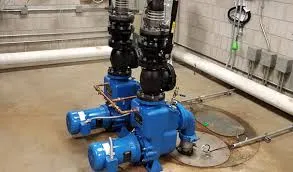Catalan
- Afrikaans
- Albanian
- Amharic
- Arabic
- Armenian
- Azerbaijani
- Basque
- Belarusian
- Bengali
- Bosnian
- Bulgarian
- Catalan
- Cebuano
- Corsican
- Croatian
- Czech
- Danish
- Dutch
- English
- Esperanto
- Estonian
- Finnish
- French
- Frisian
- Galician
- Georgian
- German
- Greek
- Gujarati
- Haitian Creole
- hausa
- hawaiian
- Hebrew
- Hindi
- Miao
- Hungarian
- Icelandic
- igbo
- Indonesian
- irish
- Italian
- Japanese
- Javanese
- Kannada
- kazakh
- Khmer
- Rwandese
- Korean
- Kurdish
- Kyrgyz
- Lao
- Latin
- Latvian
- Lithuanian
- Luxembourgish
- Macedonian
- Malgashi
- Malay
- Malayalam
- Maltese
- Maori
- Marathi
- Mongolian
- Myanmar
- Nepali
- Norwegian
- Norwegian
- Occitan
- Pashto
- Persian
- Polish
- Portuguese
- Punjabi
- Romanian
- Russian
- Samoan
- Scottish Gaelic
- Serbian
- Sesotho
- Shona
- Sindhi
- Sinhala
- Slovak
- Slovenian
- Somali
- Spanish
- Sundanese
- Swahili
- Swedish
- Tagalog
- Tajik
- Tamil
- Tatar
- Telugu
- Thai
- Turkish
- Turkmen
- Ukrainian
- Urdu
- Uighur
- Uzbek
- Vietnamese
- Welsh
- Bantu
- Yiddish
- Yoruba
- Zulu
Telephone: +86 13120555503
Email: frank@cypump.com
ag. . 12, 2024 15:18 Back to list
Understanding the Importance and Maintenance of Septic Pump Systems for Homeowners and Property Managers
Understanding Septic Pumps Essential Components of Wastewater Management
A septic pump plays a vital role in the functioning of a septic system, which is a common wastewater treatment method used in rural areas where municipal sewage systems are not available. The purpose of a septic system is to treat and safely dispose of domestic wastewater generated from households. This article will delve into the importance of septic pumps, their types, functions, maintenance, and the critical role they play in protecting public health and the environment.
The Role of Septic Pumps
Septic systems typically consist of a septic tank and a drain field. Wastewater flows from the home into the septic tank, where solids settle at the bottom, and lighter substances like grease rise to the top. The liquid effluent then flows out of the tank into the drain field, where it is filtered through the soil. However, in some cases, gravity alone cannot transport the wastewater efficiently, particularly when the tank is located at a lower elevation than the drain field. This is where septic pumps come into play.
Septic pumps are responsible for moving the effluent from the septic tank to the drain field, ensuring that the system functions effectively. They help to maintain the appropriate flow of wastewater and prevent backup problems that could lead to environmental contamination or costly repairs.
Types of Septic Pumps
There are two main types of septic pumps that homeowners may encounter effluent pumps and grinder pumps.
1. Effluent Pumps These pumps are designed to move the partially treated wastewater (effluent) from the septic tank to the drain field. They are typically used in conventional systems and are essential when gravity flow is insufficient. Effluent pumps have a float switch that activates the pump when the liquid level rises above a certain point, ensuring efficient operation.
2. Grinder Pumps These pumps are more robust and are used in systems where the wastewater needs to be ground down to a finer consistency before being pumped away. Grinder pumps are ideal for homes where the septic tank is below the level of the drain field, as they can handle solid waste more efficiently than effluent pumps.
septic pump

Maintenance of Septic Pumps
Proper maintenance of septic pumps is essential to ensure their longevity and reliability. Regular inspection and servicing can help to identify potential issues before they become significant problems. Homeowners should
- Check the Float Switch Ensure the float switch is functioning correctly and is free of debris. A malfunctioning float switch can lead to pump failure.
- Inspect for Clogs Regularly check for clogs in the plumbing leading to the septic tank and the drain field.
- Pump Regularly Have the septic tank pumped out every 3 to 5 years, depending on the size of the tank and the number of occupants in the household.
- Be Cautious of What Goes Down the Drain Avoid flushing non-biodegradable items or excessive amounts of grease and chemicals down the drain, as these can damage the pump and the entire septic system.
Conclusion
Septic pumps are essential for the efficient operation of septic systems, ensuring that wastewater is treated and disposed of in a safe manner. By understanding their function, types, and maintenance, homeowners can help extend the life of their septic systems and protect both public health and the environment. Proper care and timely servicing of septic pumps can save homeowners from costly repairs and maintenance in the long run, making it a crucial aspect of responsible homeownership in rural areas.
-
Custom Drilling Mud and Slurry Pump Supplier - High Efficiency, Tailored Solutions
NewsJun.10,2025
-
Supply Vertical Submersible Sewage Pump High-Efficiency WQ/QW Pumps Supplier
NewsJun.10,2025
-
Premium Sewage Ejection System & Pumps Efficient Waste Removal
NewsJun.09,2025
-
Premium Wholesale Slurry Pump Impellers Durable & Efficient Slurry Handling
NewsJun.09,2025
-
Top Sewage Pump Companies Durable Industrial Solutions for Efficiency
NewsJun.09,2025
-
Heavy Duty Slurry Pumps - OEM High Performance & Bulk Wholesale
NewsJun.09,2025










